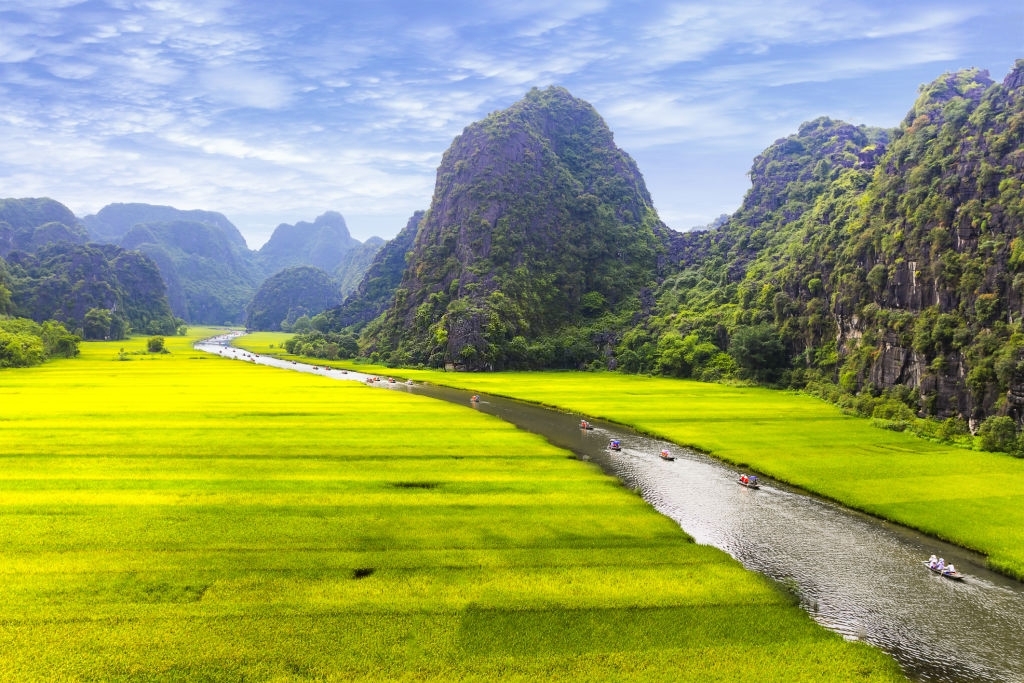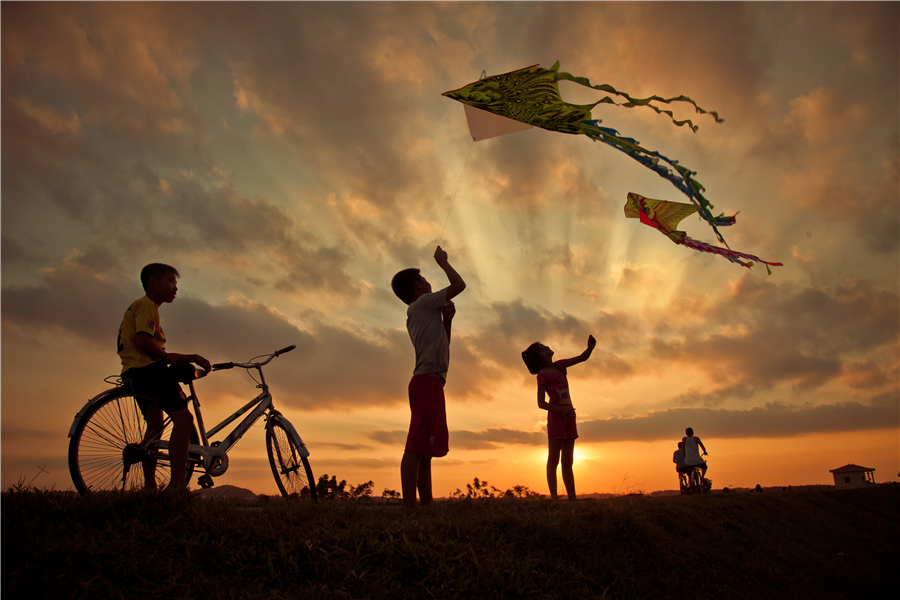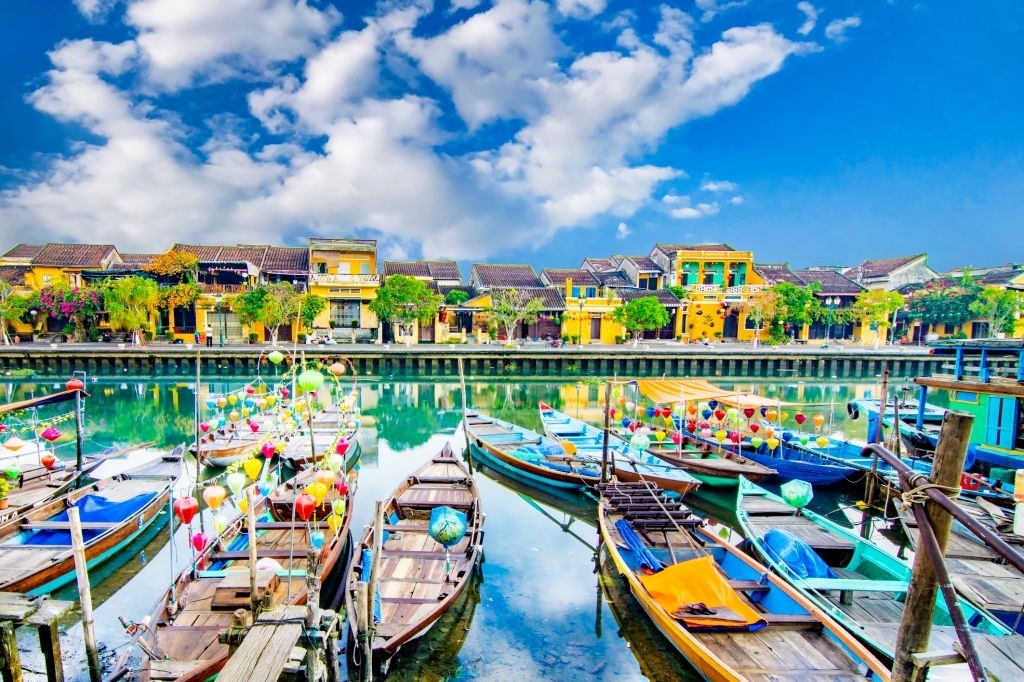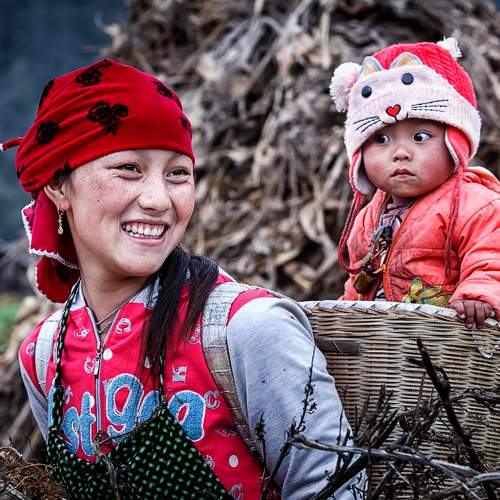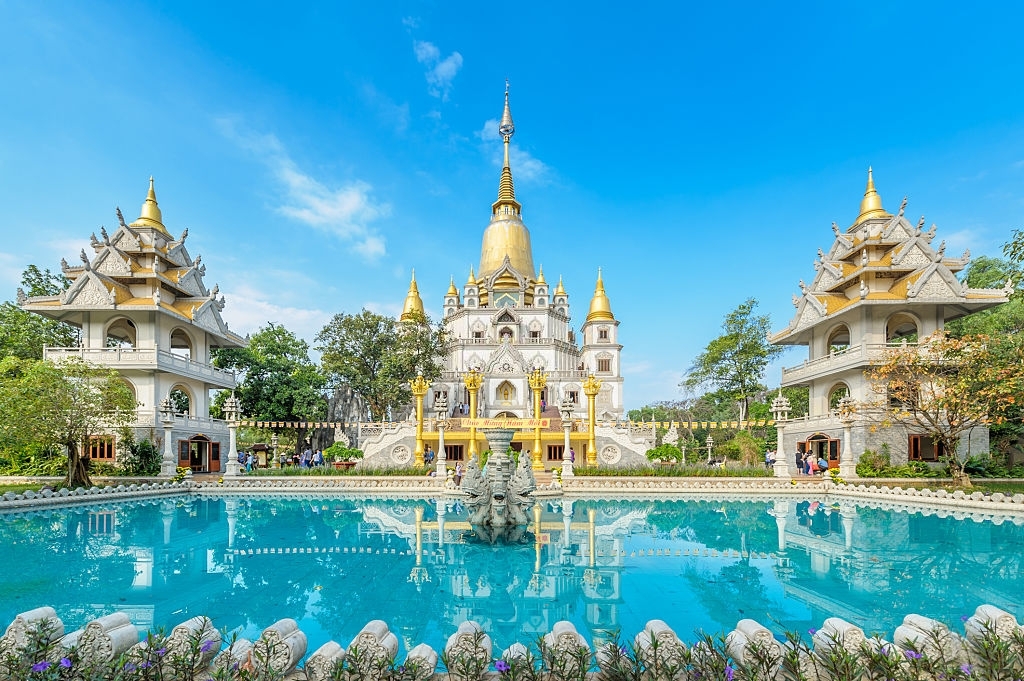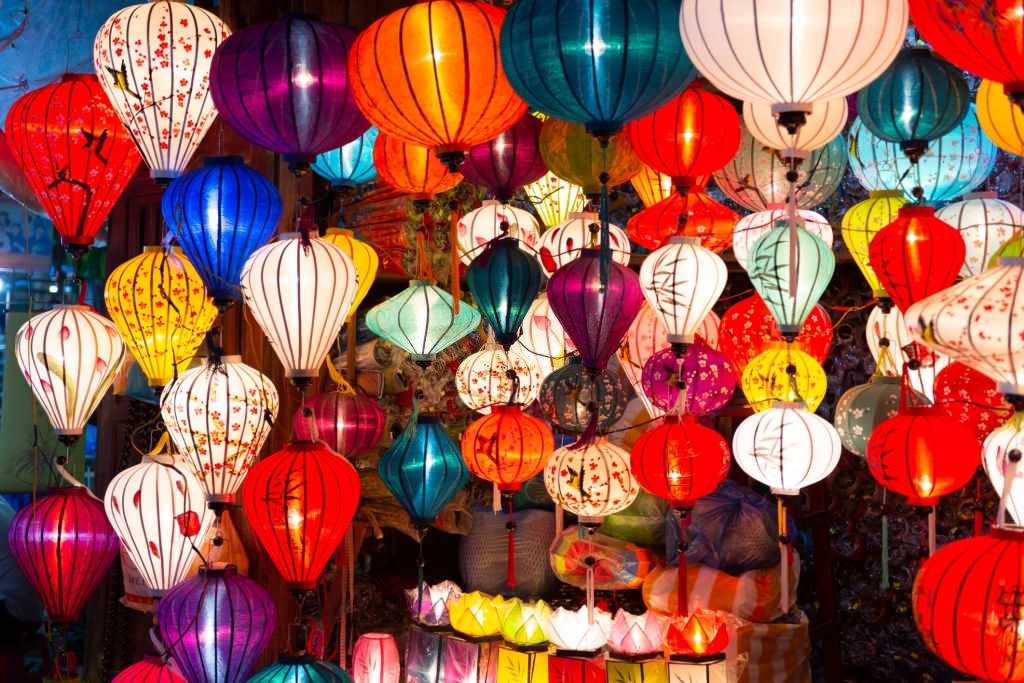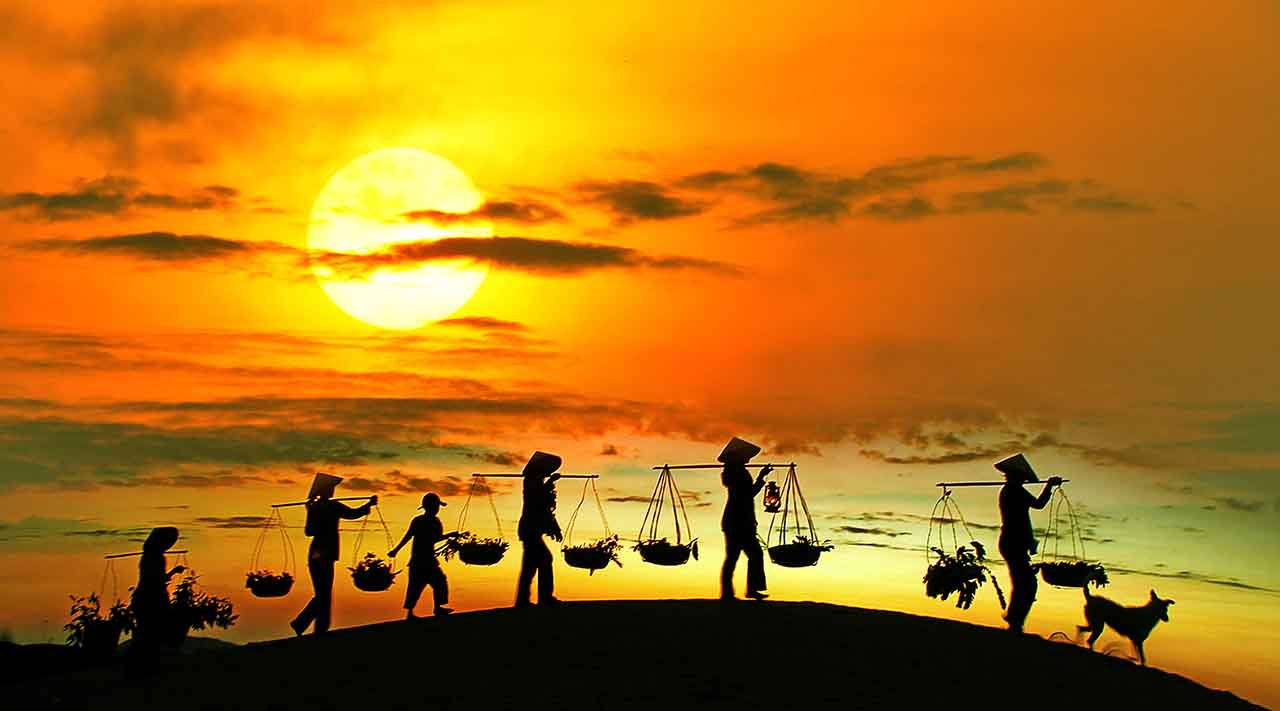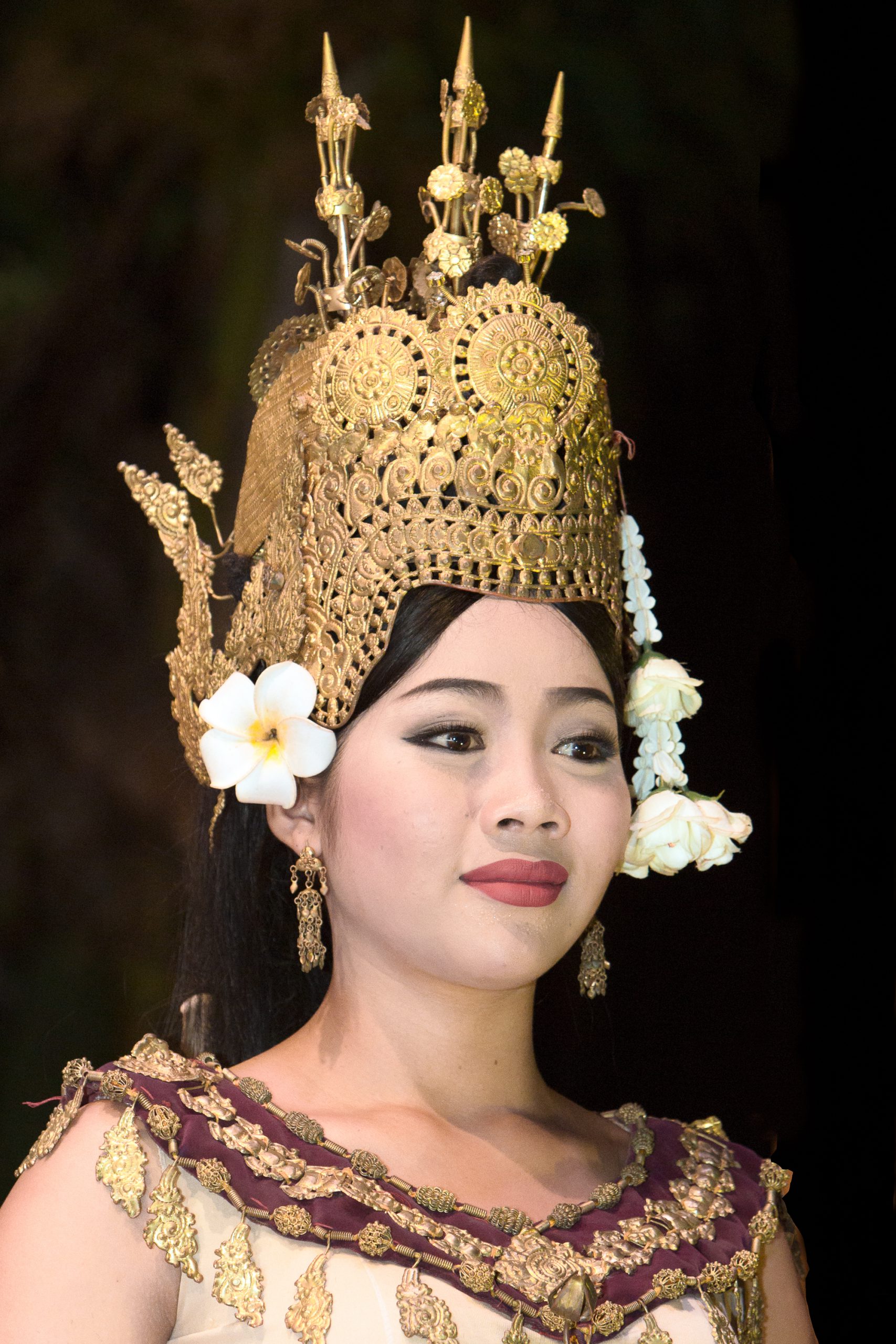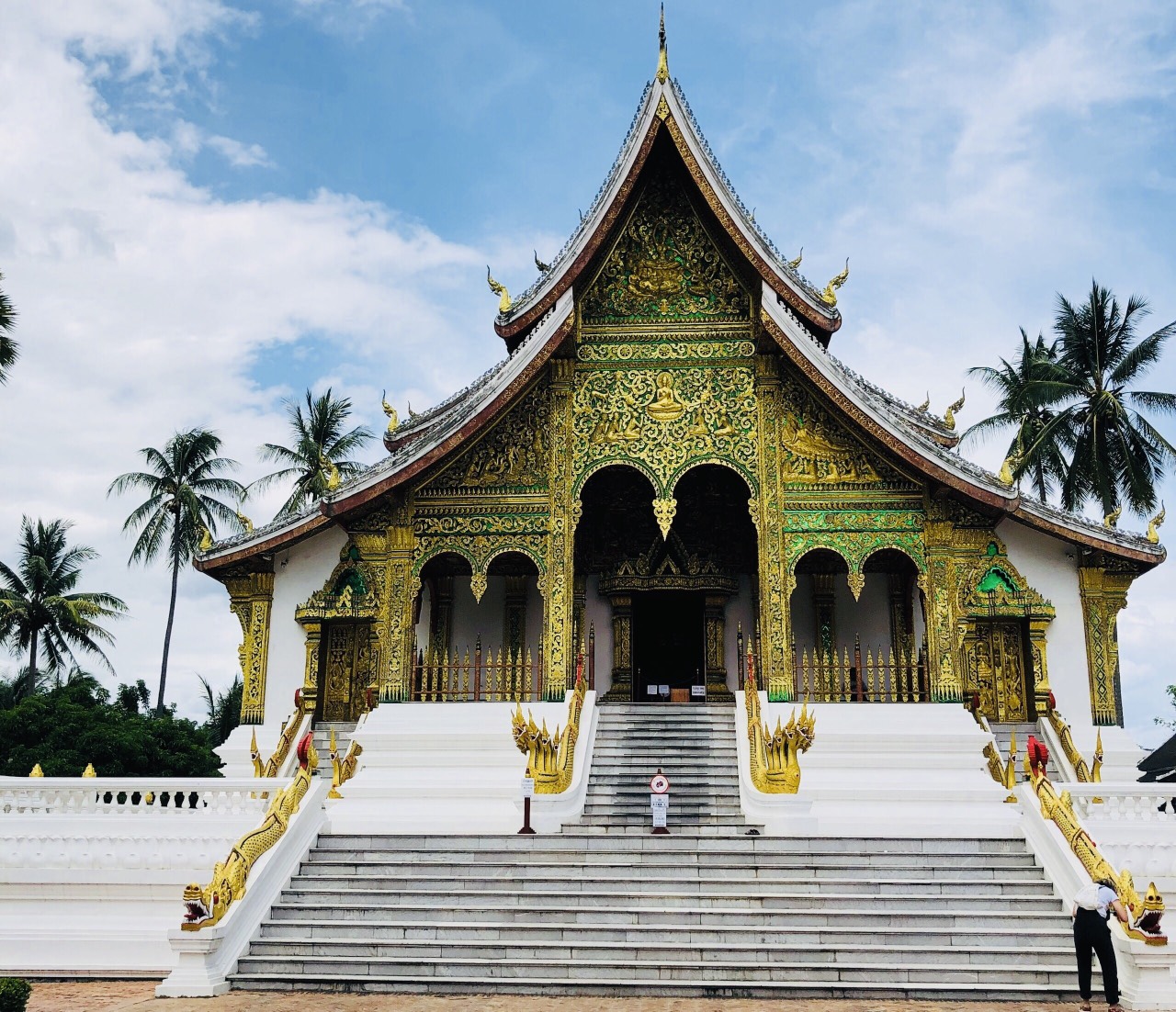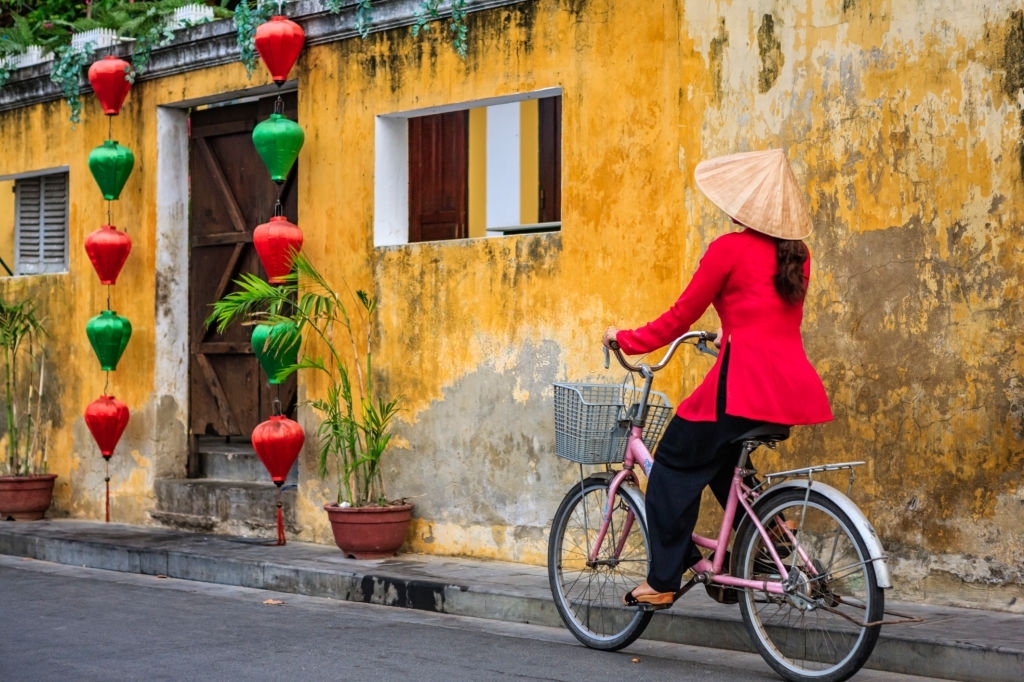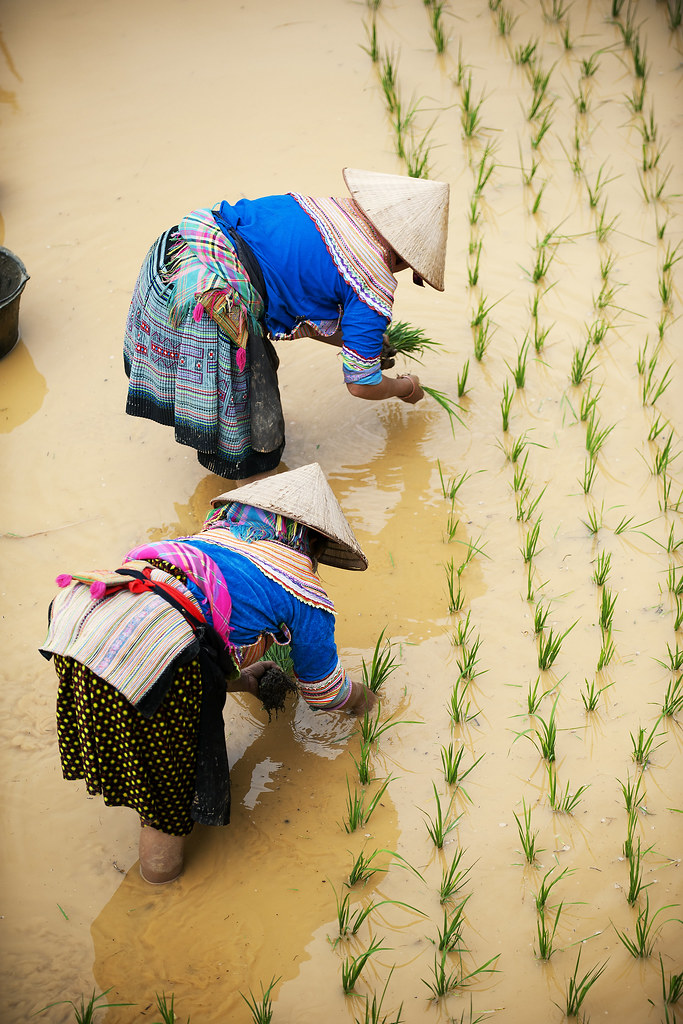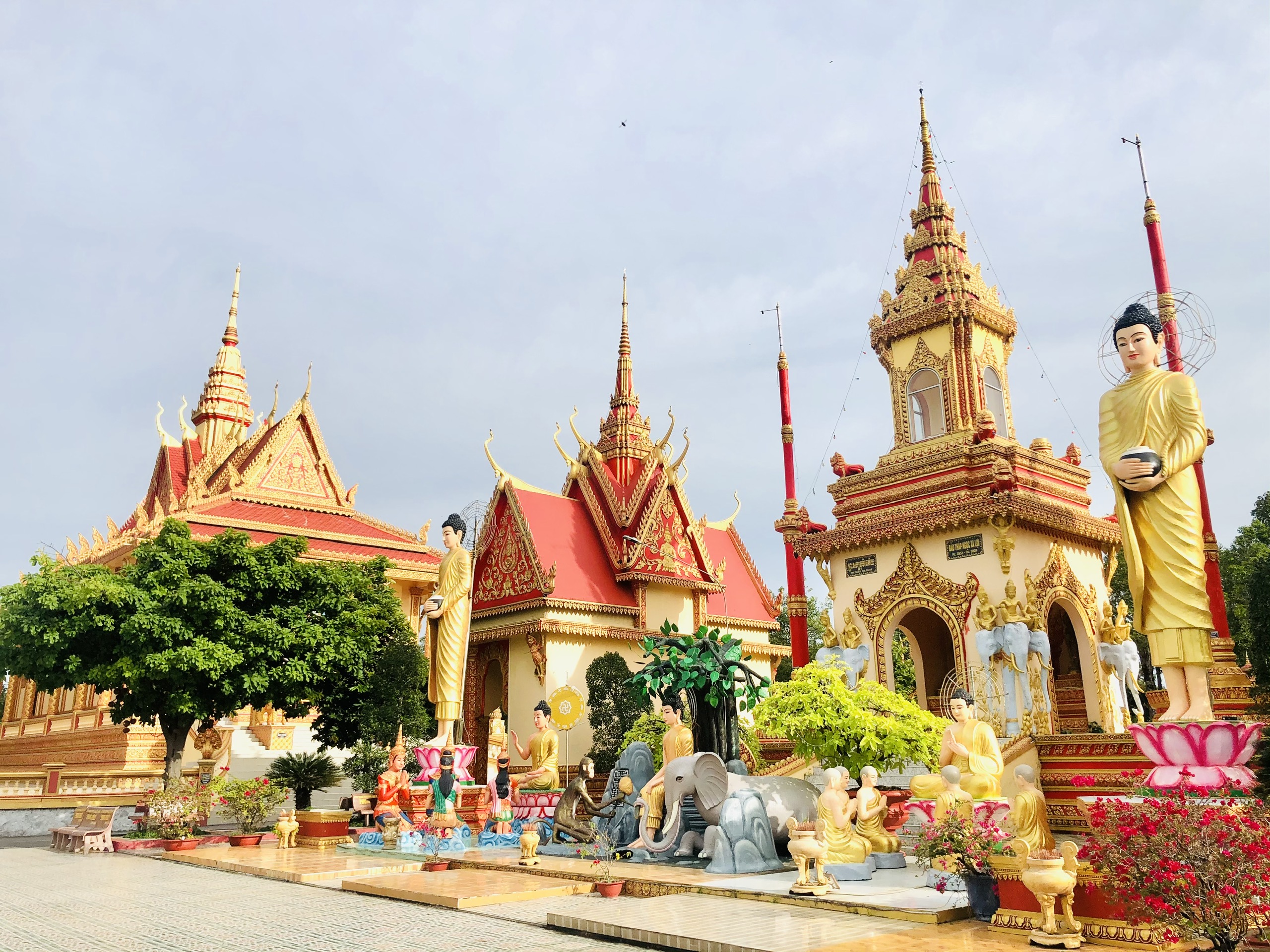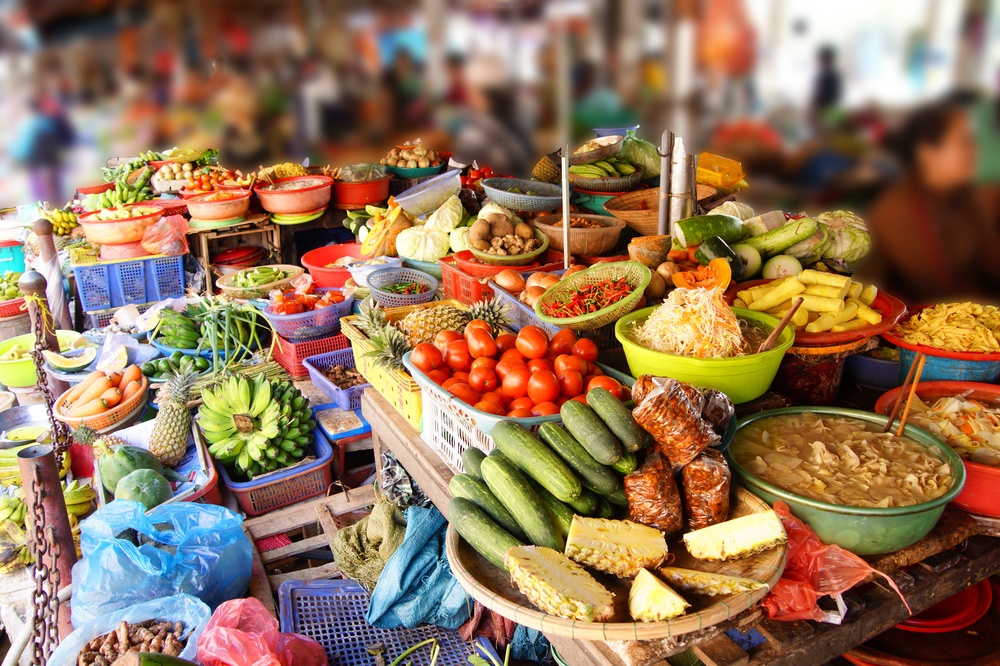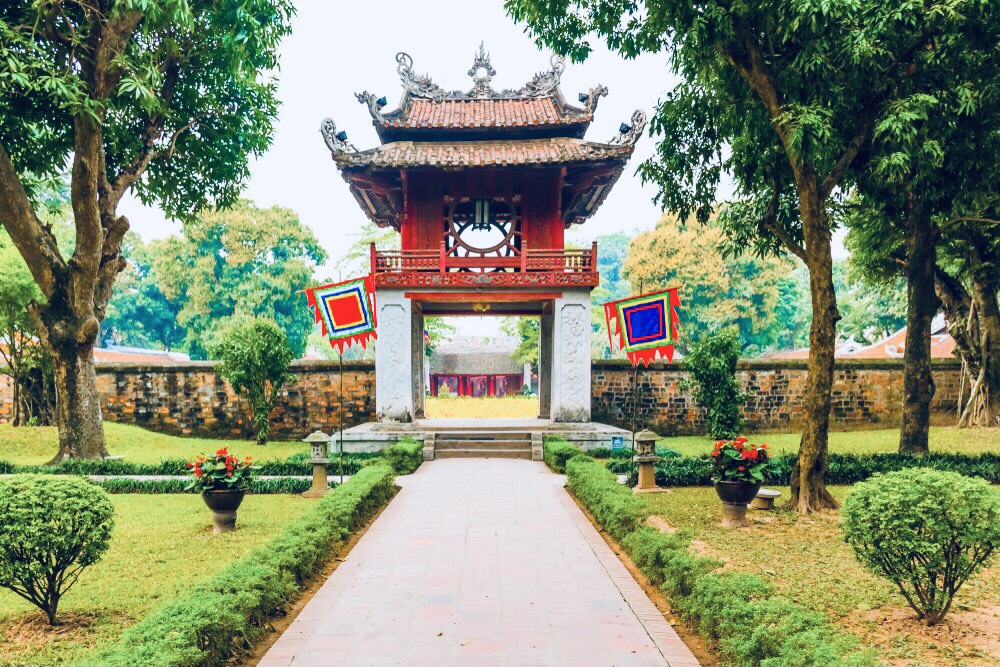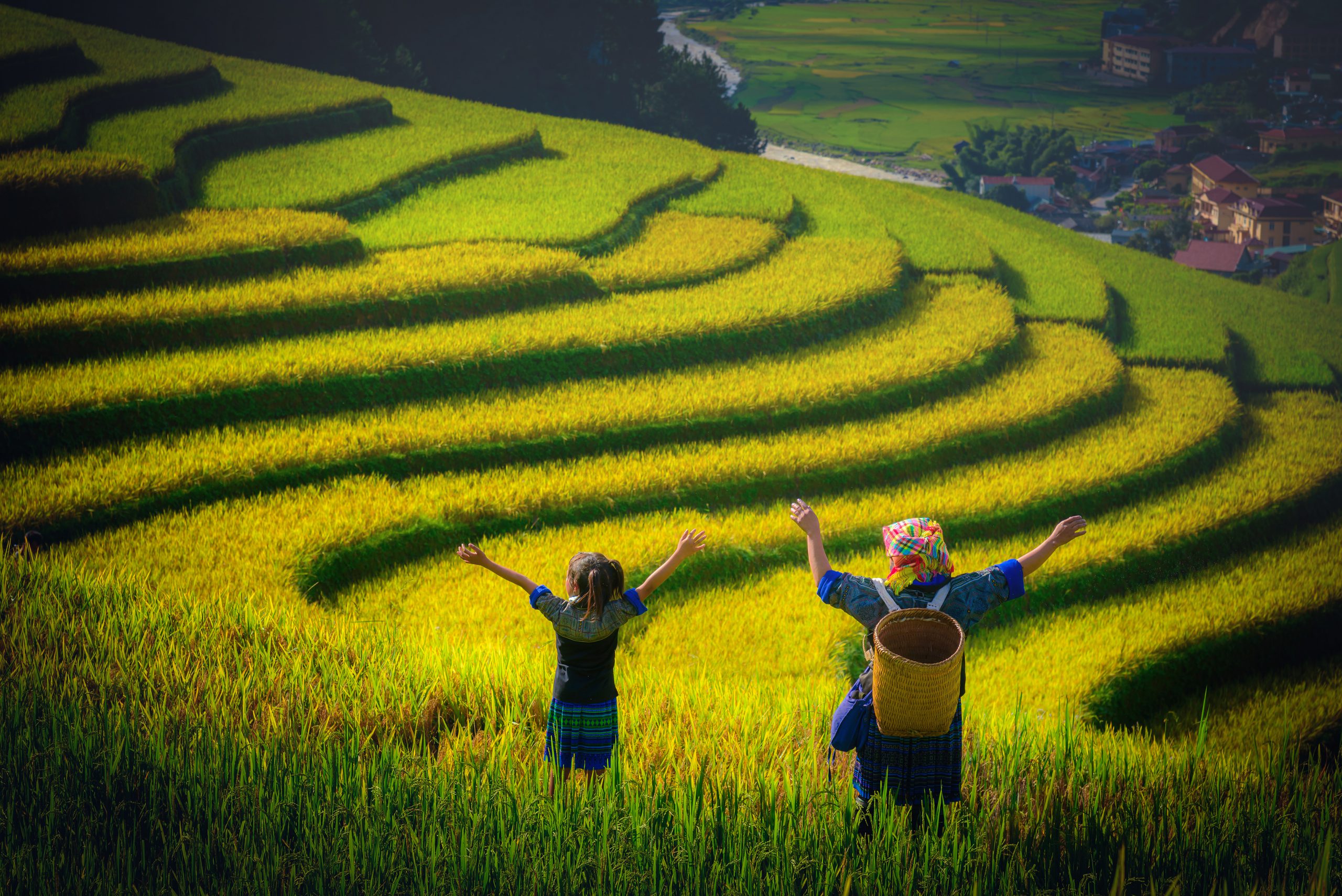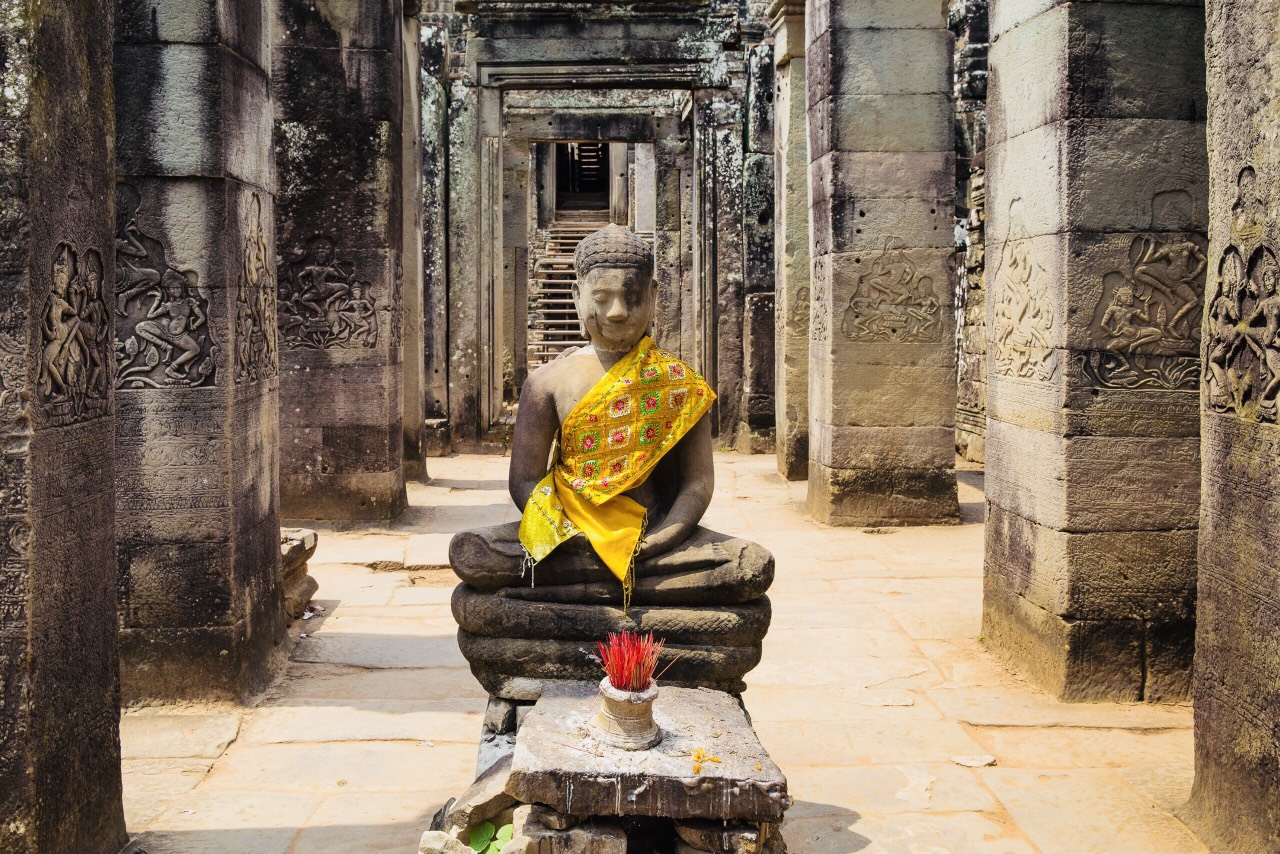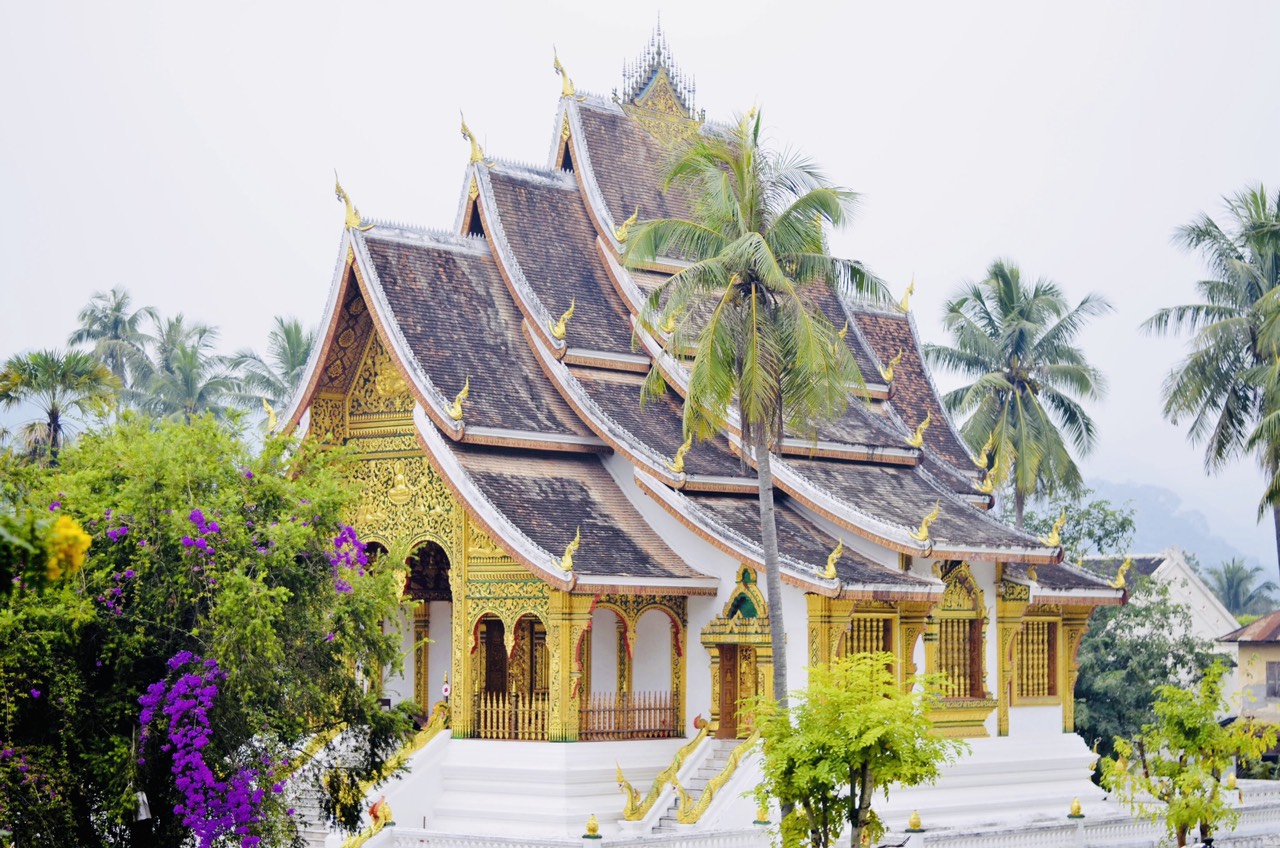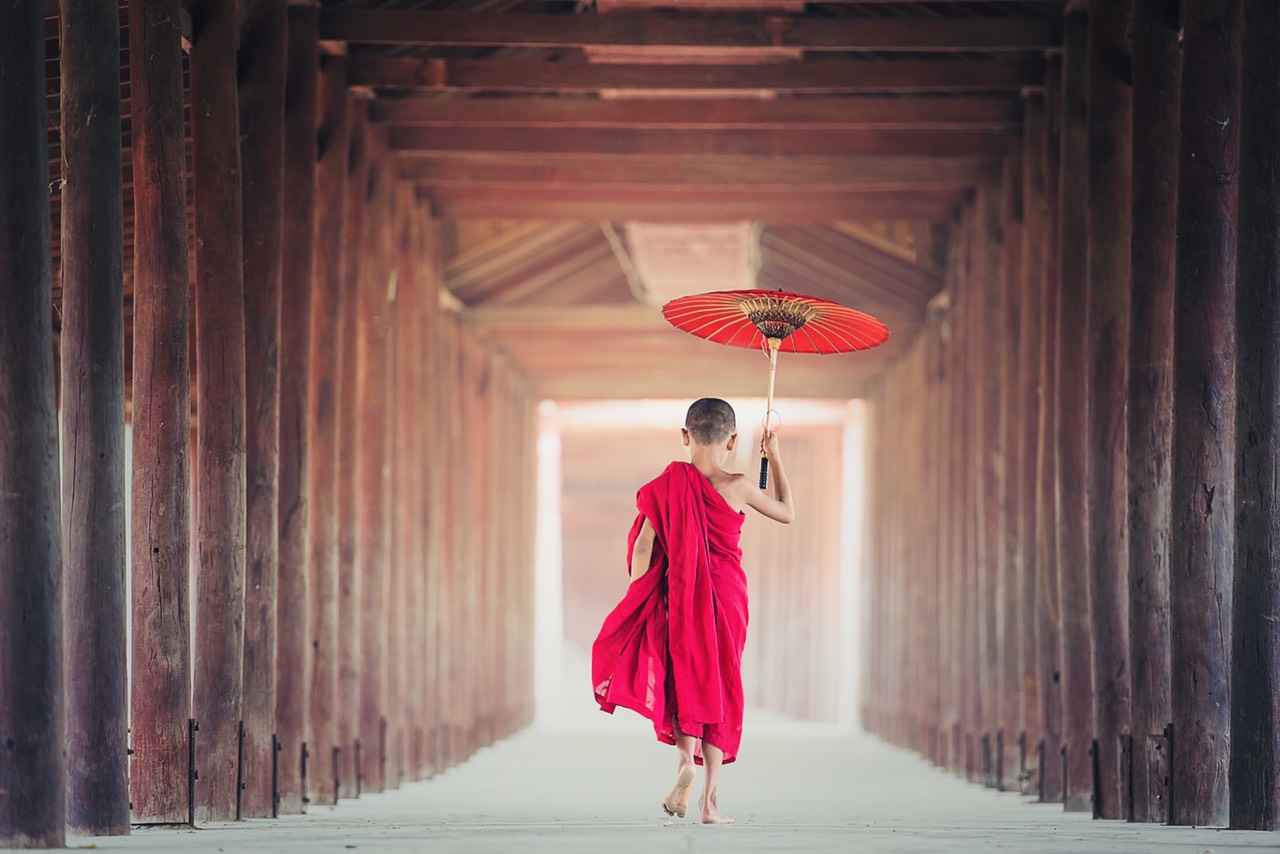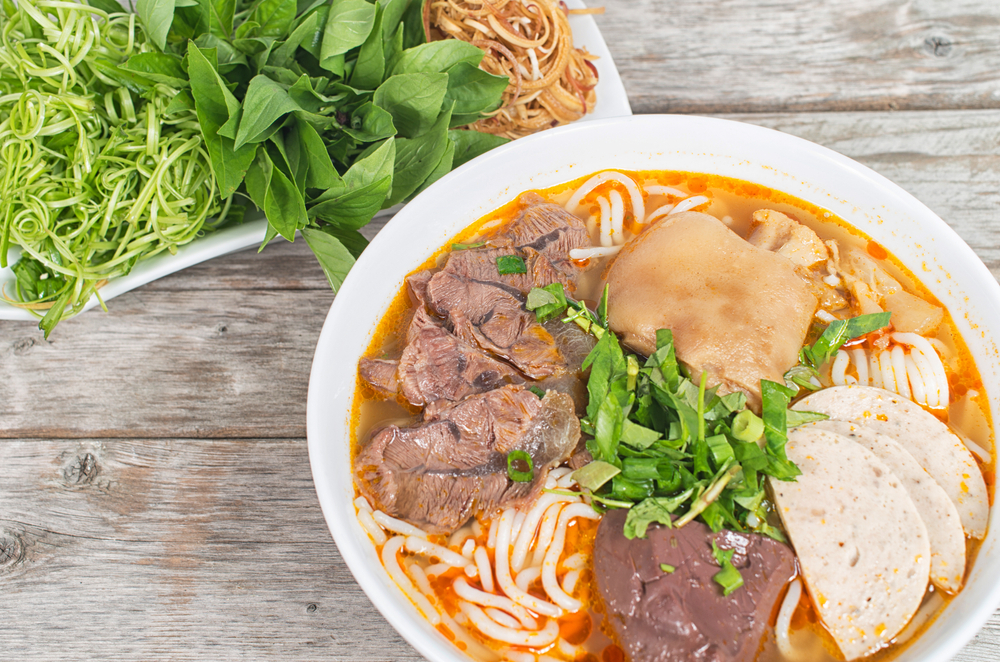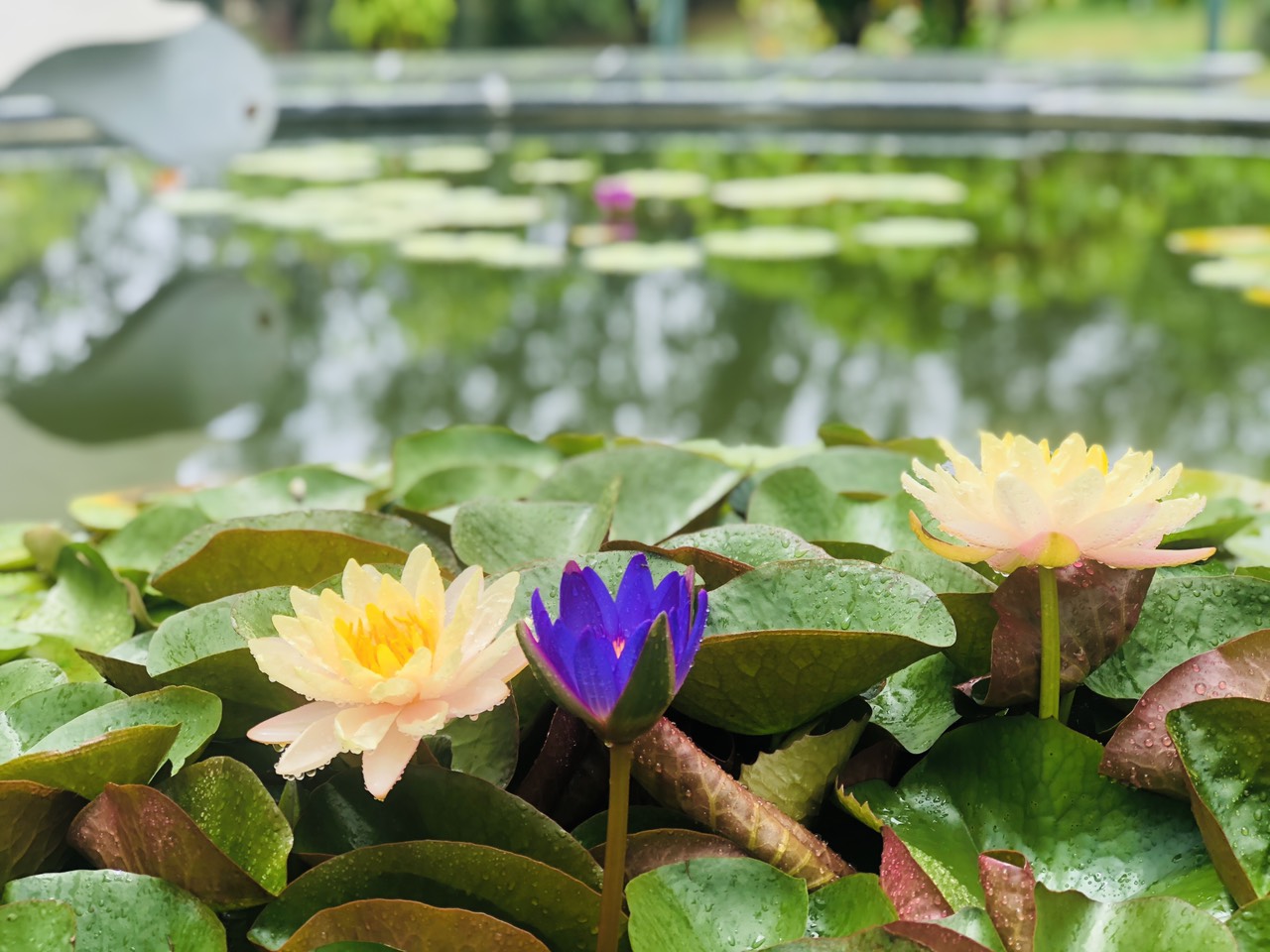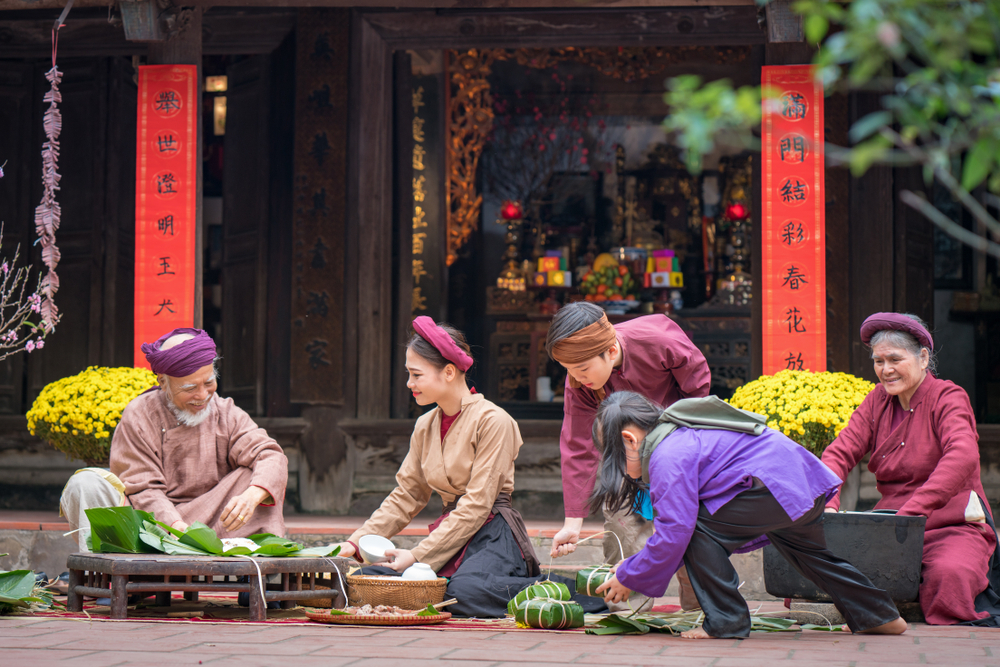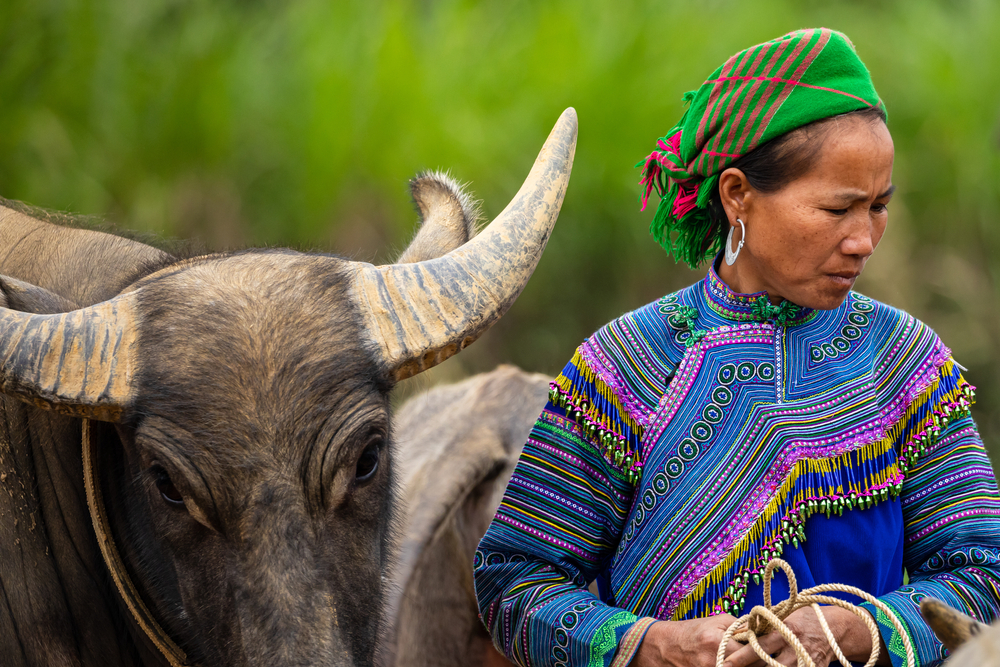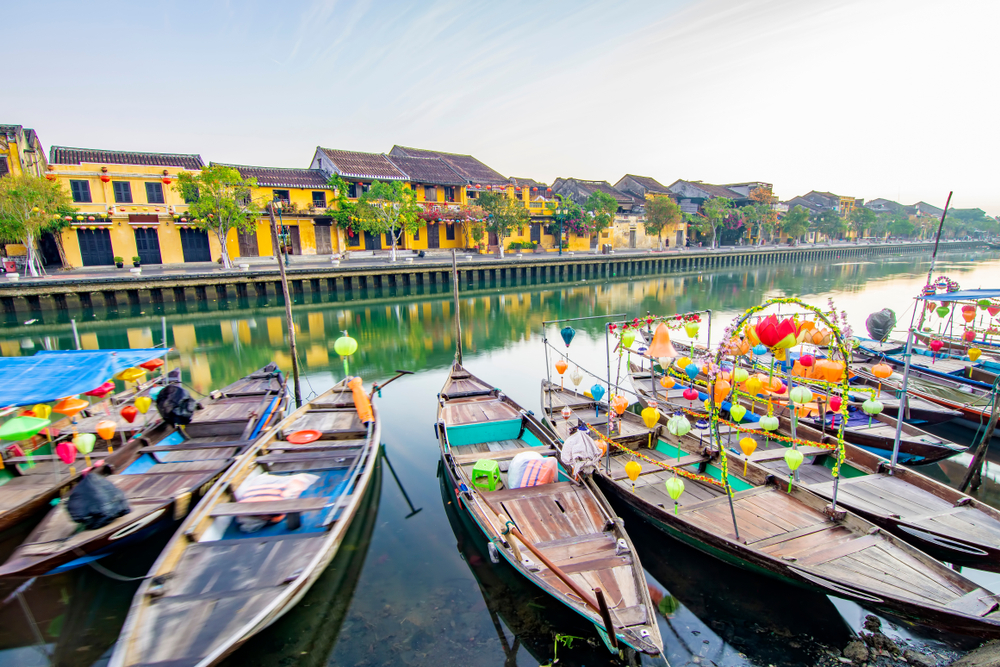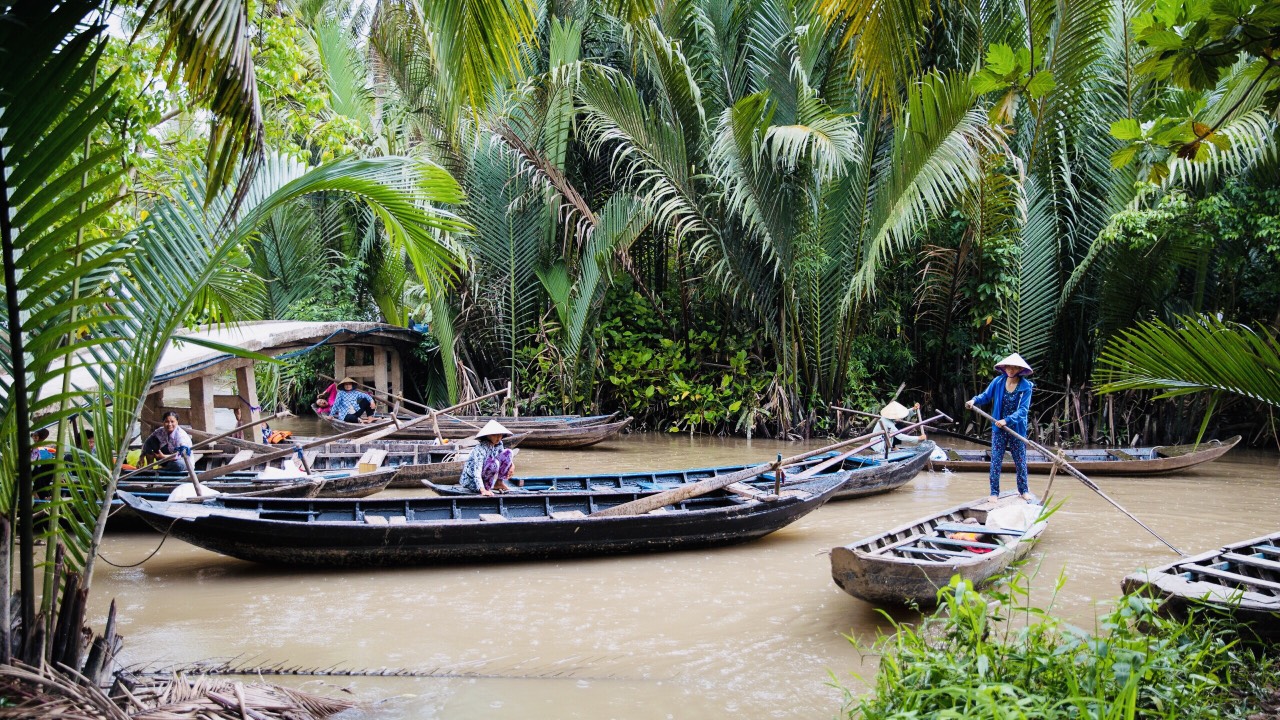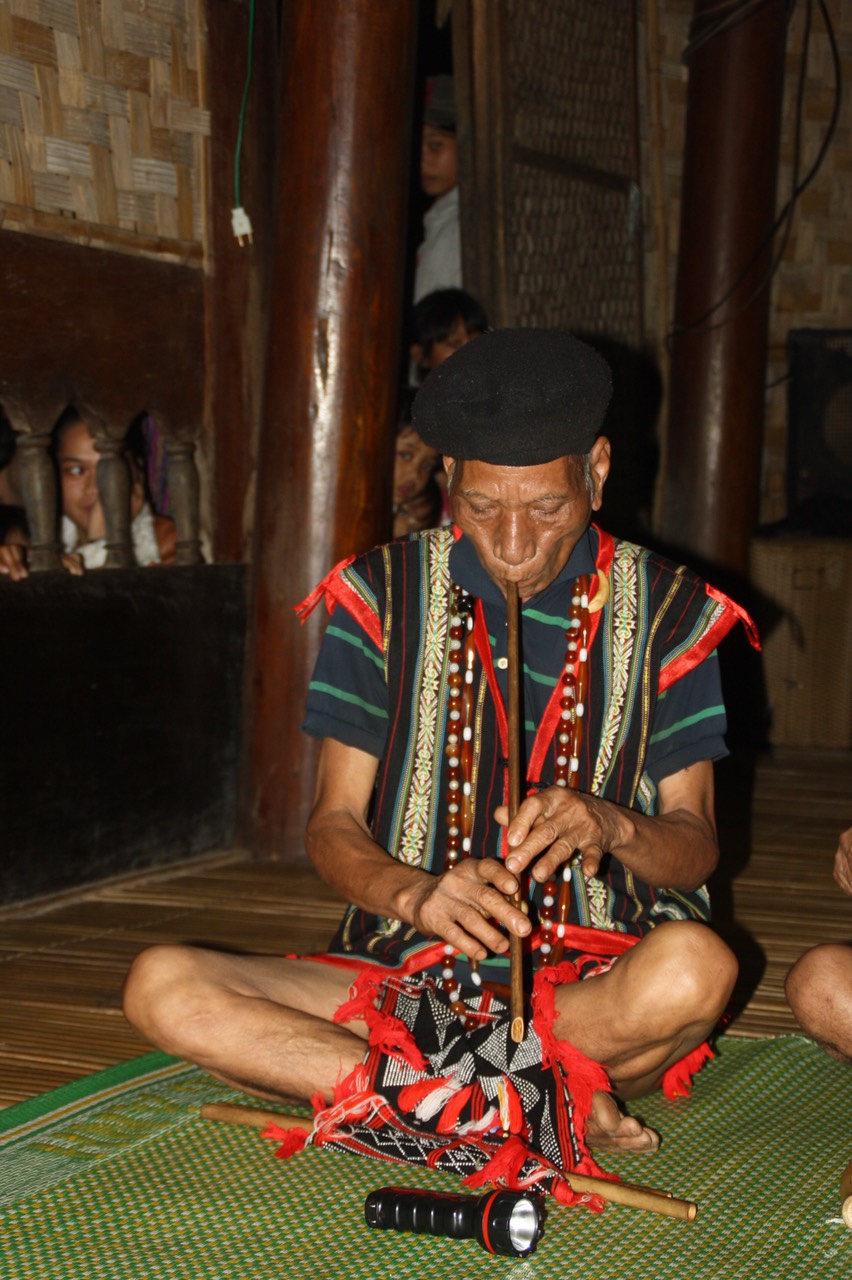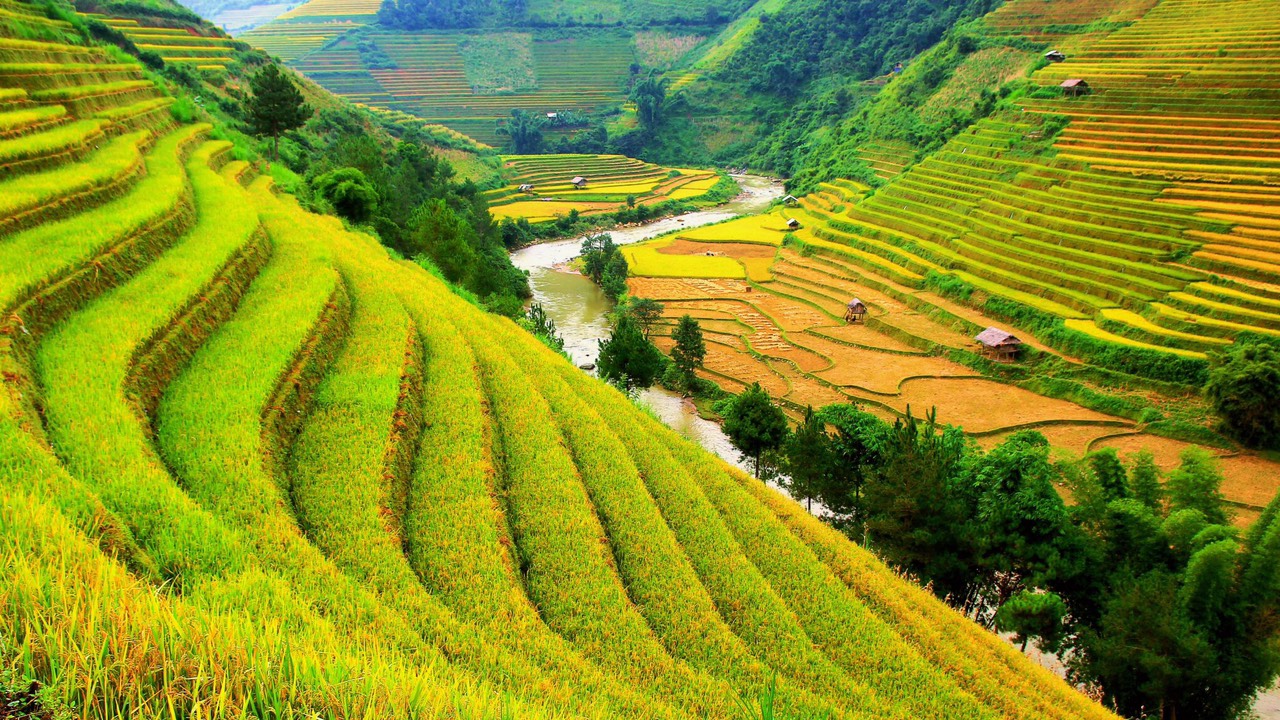
Staple food of all Vietnamese people, a bit like bread is in France.
It will be present on every table.
It can be found on every market. There are several kinds of rice in Vietnam (formerly more than 2000 varieties, today there are only about thirty).
Vietnam is in the top of the world producers of this cereal, place that it defends in competition with the other countries of Asia…
Vietnamese rice in the Mekong Delta, a grain basket 45% of rice fields are located there.
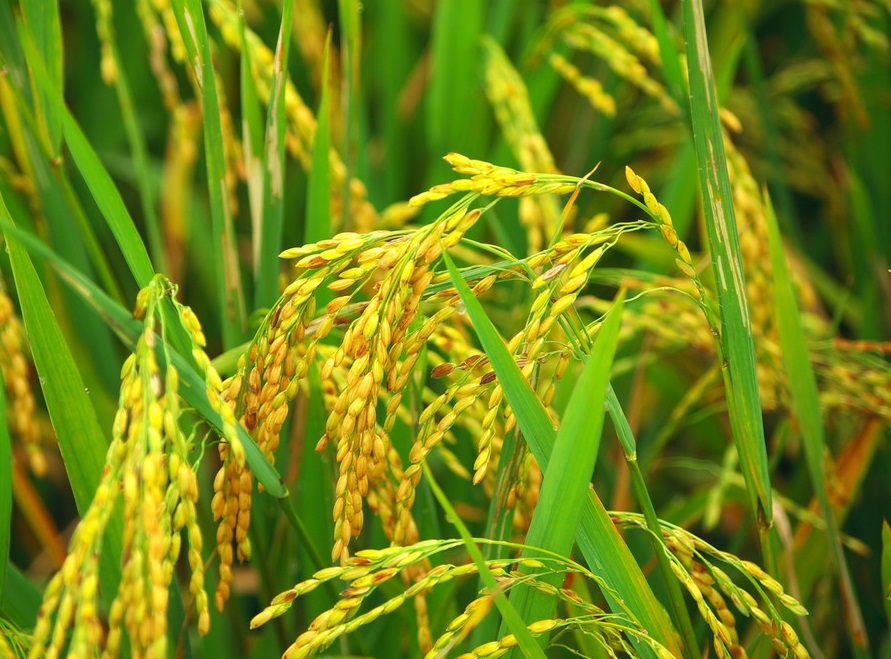
Harvests can be done up to 4 times if the climatic conditions allow it, the south represents 70% of the annual production of the country.
Drought, salinization of water as well as irrigation disrupted by the presence of numerous Chinese dams along the Mekong River are the main factors that hinder production.
Rice from the Red River Delta in the north is the country’s second most important production, with two harvests per year.
Then all these mountain rice, fragrant for some, sticky, red for others, they are cultivated in terraces with sometimes, depending on the altitude, a single harvest per year.
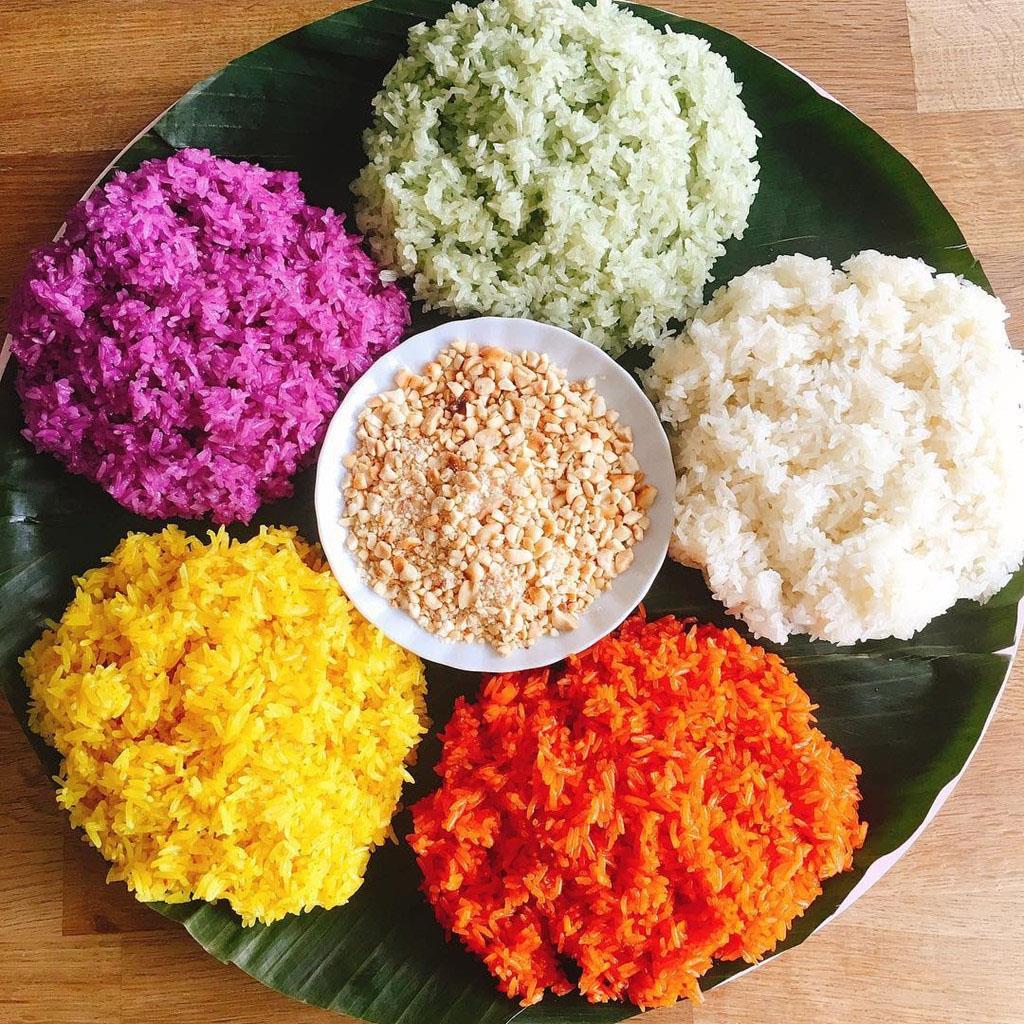
The rice that you will eat most often in restaurants and small restaurants in the country will come from the Mekong River delta (south) or the Red River delta (north).
The white rice will be cooked in large pots and now everywhere in the electric rice cookers, each family will have its own…
The recipe at home:
First of all, wash the rice (including the rice you buy in France, in a package) well to remove any residual impurities.
Put one third of the rice and two thirds of the water in your pot, bring to a boil for a few minutes, turn off the heat and cover with a thick cloth and let it simmer…after at least 1/4 hour, 20 mm, the rice will have absorbed all the water and will be cooked…
From there all the recipes are possible.
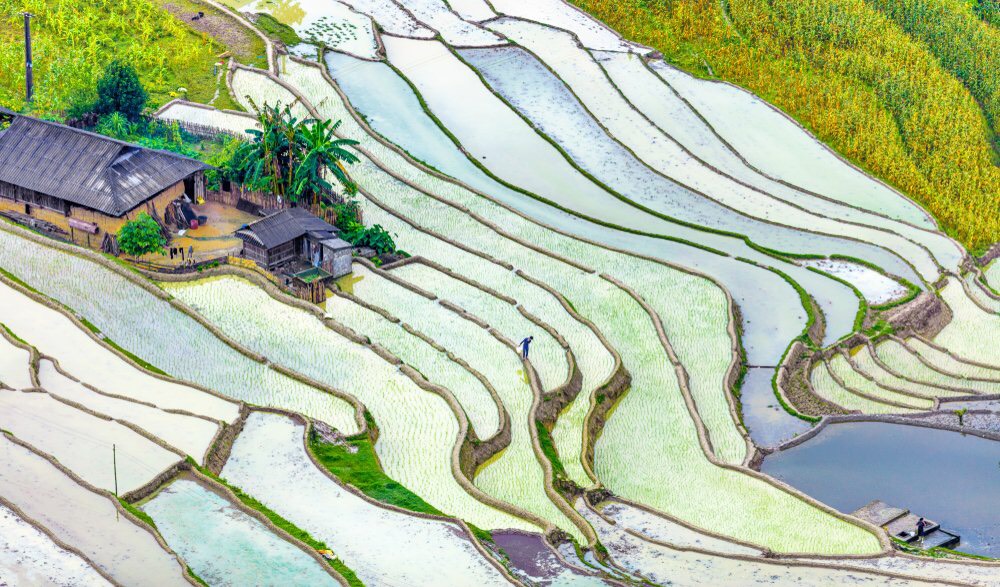
– The rice (already cooked) sautéed, that you will match with shrimps, strips of chicken, beef, pork, mushrooms, eggs according to your mood and without forgetting the herbs…you will first fry your accompaniments in a wok, a frying pan, and will add your rice by making everything brown well.
– The glutinous rice (steamed after at least 3 hours of soaking) has a very soft taste, a little sweet, and is eaten especially in the morning, it is very energetic, it is accompanied by small pieces of meat, vegetables, peanuts and fried onions in some regions, everything is allowed.
The Thais of Tu Lé (towards Mu Cang Chai, North Vietnam, where there are beautiful rice fields) stuff it after soaking in bamboos and cook it on the embers before taking it with them to the fields…
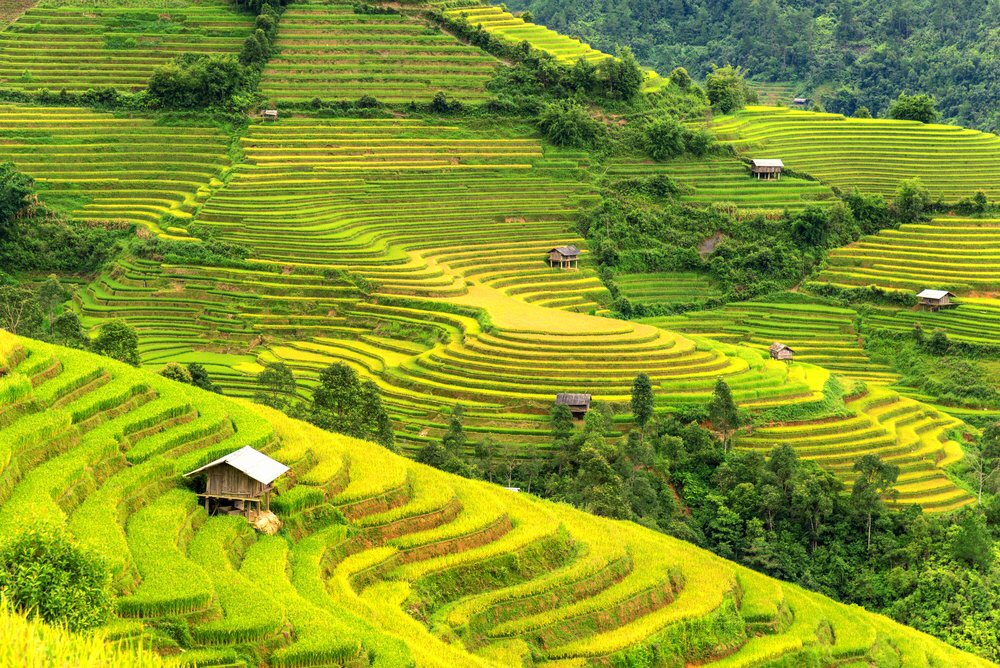
The glutinous rice enters the composition of Bang Chung, a dish essential to the Tet (New Year) celebrations.
Legend has it that this cake was created by the 18th son of King Hùng Vuong VI, Prince Lang Liêu, whose mother had died and who lived in difficulty.
One day, the king summoned all his sons and declared that he would give up his throne to the one who could prepare the tastiest dishes.
With the help of a god, Lang Liêu created two cakes made of glutinous rice, mango bean seeds and pork meat, which are the popular ingredients of Vietnamese peasant meals.
One, round in shape called “banh day”, represented the sky and the other, square in shape, called “banh chung”, referred to the earth because at that time, it was believed that the earth was square and flat.
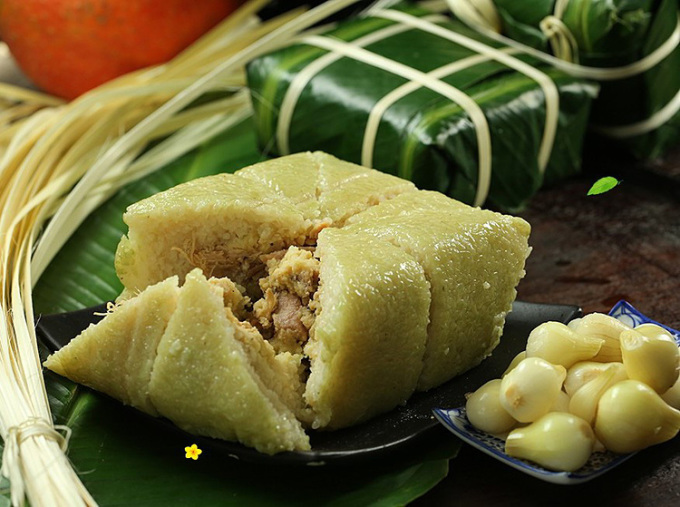
Impressed by their refined flavor and special significance, the King chose Lang Liêu as his successor.
There are many other varieties, red sticky rice for example.
We cannot forget here the inevitable rice alcohol…that we drink at the beginning of the meal and at the end too, why deprive ourselves…
Each region, each ethnic group, will have its own recipe.
To greet the guest, to start the feast well, the bottles turn and each one congratulates the other with “Môt, hai, ba, zô!” (one two three – dry ass) or chúc súc khoe (to your health), one will eat the rice only when one finished drinking and greeting each other….the first bowl indicates that one stops here.
The best of the rice and the others….
The bowl shared with the black Lolo woman, in the morning, when the roosters, the buffalo and the pigs lodged under the house had finished their nightly racket and the men were still sleeping…
It was not an elaborate preparation.
Taken out of the pot where it waits, woked on the fuck and basted with fish sauce.
It was just this magical moment when everything is silent and in suspense as we both sit on the bamboo terrace watching the sun peek over the mists that still obscure the rice fields.
Then Lien, I love his rice soup, Cháo gà (chicken soup), the one that cures all ills including those of the soul.
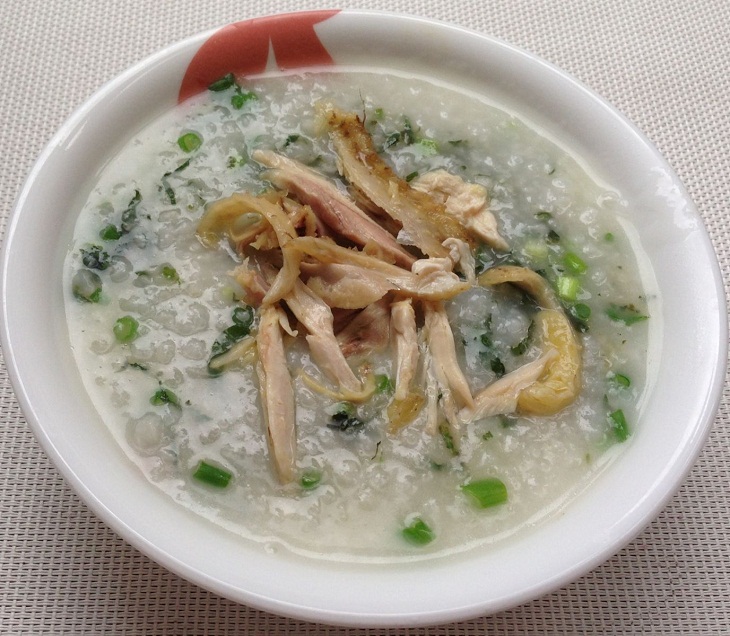
And finally, the one that is unpalatable and fortunately, it happens very rarely!
In a restaurant at the foot of Lung Cu, we counted in our bowl as many grains of rice as flies…
Cháo gà, the recipe:
With shrimps, fish, pork, tripe, chicken, vegetables, accompanied or not by fritters (as in Hanoi for example), cháo is available in various gourmet versions depending on the region.
In its simple formula, rice is cooked in chicken or chicken broth, to which is added shredded chicken or chicken cut into small pieces (the size of a small bite) and sprinkled with chopped chives and coriander before serving.
In the southwest of Vietnam, the rice is first toasted before cooking, then soaked for 5 to 6 hours before cooking.
Also in this part of Vietnam, chopped garlic is fried rather than onion or fried shallot as in other regions.



